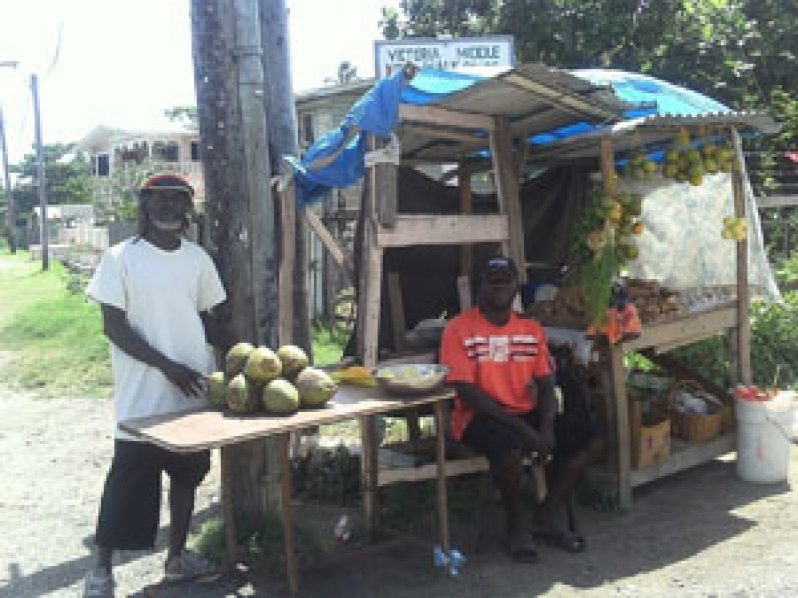THE year 2013 is replete with significant anniversaries for all Guyanese, and especially for the peoples of African and Indian ancestry. But, as usual, the big events will overshadow the lesser known historic moments.
 Already, some plans are in the execution stage to commemorate the 250th anniversary of the Berbice Slave Uprising; the 190th anniversary of the 1823 Demerara Revolt; the 175th anniversary of Emancipation; and the 175th anniversary of the arrival of Indians to Guyana.
Already, some plans are in the execution stage to commemorate the 250th anniversary of the Berbice Slave Uprising; the 190th anniversary of the 1823 Demerara Revolt; the 175th anniversary of Emancipation; and the 175th anniversary of the arrival of Indians to Guyana.
Many of these activities will be marked with pomp and ceremony, and some will be marred by controversy.
Scholarships on the foregoing events are in abundance, so there is little need to repeat the details here. However, while going through my library, I was attracted to a slim booklet, published since our independence year, 1966, another historic occasion in the history of Guyana. It seemed as if it was by design that that booklet surfaced at such a historic period; both the book and independence are about freedom.
As then Local Government Minister, Mr R. E. Cheeks had observed, such a publication couldn’t be more propitious, coming as it did “…at a time when the youthful nation is searching for its personality and is awake to the value of its own recorded past.”
The book, ‘History of Victoria Village’, written by William N. Arno, tells the inspiring story of how a group of recently emancipated Africans pooled their resources together in order to make an unprecedented purchase of a sizable village on the East Coast of Demerara.
The purchase was one aspect of that inspiring story; the other aspect was that those “intrepid” ex-slaves were able to draft rules and regulations to preserve their investment.
There were twenty Articles in that Agreement “for the good regulation and general benefit of said estate.” This tells us that the ex-slaves knew exactly what they wanted out of the investment; and two of the first things they wanted were a church and a school house, “which shall be used and devoted to the purposes of Religion as a School House and Church, where our children may be taught to read their Bibles and learn their several duties; and where we may offer up to Almighty God our humble prayers and thanks for the mercies we have received, and the benefits we are enjoying.” In essence, education and church were accorded top priority in the grand scheme of things.
According to the book, in November of 1839, eighty-three persons, including two women, bought what was then Plantation Northbrook for the sum of 30,000 Guilders ($10, 284, 63c.). But while it was mentioned both in the book and other documentation that just two women were involved in that transaction, the actual list of names has revealed that there were other women in on the deal.
That succinct ‘History of Victoria Village’ was well supported by “a note from his [Arno] daughter’, a word from the Guyana Heritage Society, a foreword by R. E. Cheeks, a tribute to Arno by G. H. A. Bunyan, and two appendices.
All of those parts add to the story, but the two appendices are pregnant with relevant information. For instance, in Appendix I, there is a list of the “Proprietors of Victoria Village, East Coast Demerara, August 21, 1854,” the twenty-point agreement, ‘John Smith, Noble Congregational Martyr’, notes on public meetings on the way forward, a historical review of the community centre aided self-help project, and a beautifully worded petition to His Excellency Sir Gordon James Lethem in 1944, seeking a “Community Centre and a Recreation Ground for our youths” among other facilities.
In that petition, the villagers marketed the village well: “(o)ver a period of years, the village developed into one of the most thriving communities of the Colony, so much so that it came to be known as the “Sweet Auburn’ of the Coast and Sanatorium of British Guiana, on account of its excellent health conditions.”
And Appendix II is also pregnant with relevant information, as again, in flowery language, the villagers sought the approval of the Queen to use her name in renaming the village ‘Victoria’.
In a petition (dated November 30, 1839) to the Queen through the Governor, Henry Light, the villagers wrote: “We would fain band down to posterity some token of our gratitude, and some memento of the emancipation which we have witnessed, partaken of, and enjoyed; and we conceive that we cannot do so more effectually ….than by being allowed to name our plantation after our good and gracious young Queen, Victoria,” entreating the governor to represent them in such a way as to “obtain her Royal consent.”
‘History of Victoria Village’ by William N. Arno is a slim book, but it is replete with inspirational stories for modern Guyana; somehow, we have lost that community spirit, and we have abandoned the act of cherishing what we have and to build on what we have; things ex-slaves were able to do just after emancipation.
When will we learn! (‘The History of Victoria Village’ was first published in 1966; it was reprinted by the Guyana Heritage Society in 2000)
WHAT’S HAPPENING:
• The Guyana Annual 2012-2013 magazine is now available at Guyenterprise Ltd, and at city bookstores. This issue of the magazine is dedicated to E. R. Braithwaite. The magazine also features articles on copyright, law of intellectual property, creative industries, and the future of books.
• Coming soon: ‘An Introduction to Guyanese Literature’, by Petamber Persaud.




.png)









